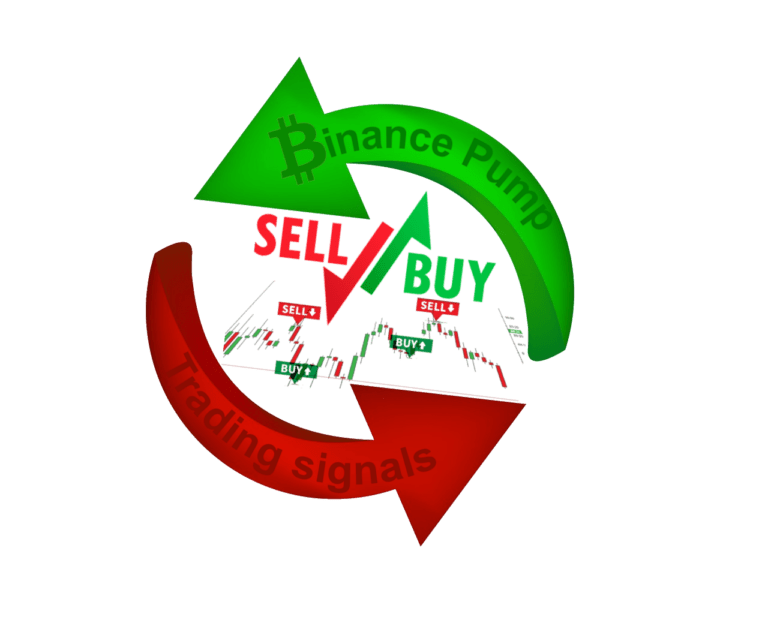September 21, 2020, was the fruits of a set of concepts that had been put down on paper again in 2018 relating to learn how to create a sensible contract platform that’s each scalable and presents excessive efficiency.
That concept was and is Avalanche, and whereas the principle web launch on September 21 was the fruits of the concepts in that early whitepaper, it’s also simply the beginning for the Web of Finance as Avalanche democratizes monetary markets and bridges all blockchain platforms collectively into one interoperable ecosystem.

Avalanche is the open-source blockchain that bridges the wants of builders and customers. With it, new blockchains will be created that run on the principles the developer specifies. New property will be created and coded to obey particular parameters and buying and selling restrictions. And scalable good contracts and dApps turn into a actuality.
Ava Labs, the builders of Avalanche, have stated that that is the primary blockchain that may deal with good contracts and in addition conduct transactions in underneath a second.
Under we’ll study way more about Avalanche and the way it’s bringing good contracts and decentralized finance each into the longer term.
Good Contract Platforms
To start with, there was Bitcoin. It was created as a solution to retailer and switch worth in a permissionless style with out the necessity for a trusted third social gathering. Anybody can use the Bitcoin blockchain to retailer or switch worth at any time and at anywhere.
All that’s wanted is a community connection. It has been in comparison with gold as a retailer of worth, however it’s truly fairly completely different from gold. And but the use circumstances for Bitcoin stay restricted in a similar way to gold.
Then Ethereum joined the world of decentralized blockchains. It was created not solely to host information like blockchains created earlier than it, however was a residing community that would truly host and run decentralized functions based mostly on the blockchain. It essentially modified the utility of the blockchain.

Good contracts are perfect for monetary functions since they stay on the blockchain and as soon as created will execute mechanically each time their circumstances are met. This enables builders to construct advanced and complex functions that may do excess of retailer and switch worth.
The dApps created could make calls to any of the good contracts residing on the blockchain to carry out specialised duties each time sure circumstances are met. This enables for issues like issuing collateralized loans or buying and selling property with out the necessity for a centralized authority.
As soon as developed, these programs will run on their very own, and this will enable for the creation of distinctive new enterprise fashions that may exchange our conventional monetary programs with peer-to-peer decentralized options.
That is the place Avalanche comes into the image.
What Makes Avalanche Particular?
Many blockchain lovers will acknowledge Avalanche as just like Ethereum in as a lot as it’s an open-source blockchain platform that permits anybody to put in writing and deploy good contracts, and to construct decentralized functions. Nonetheless, there’s a key distinction that makes Avalanche particular.
That distinction?
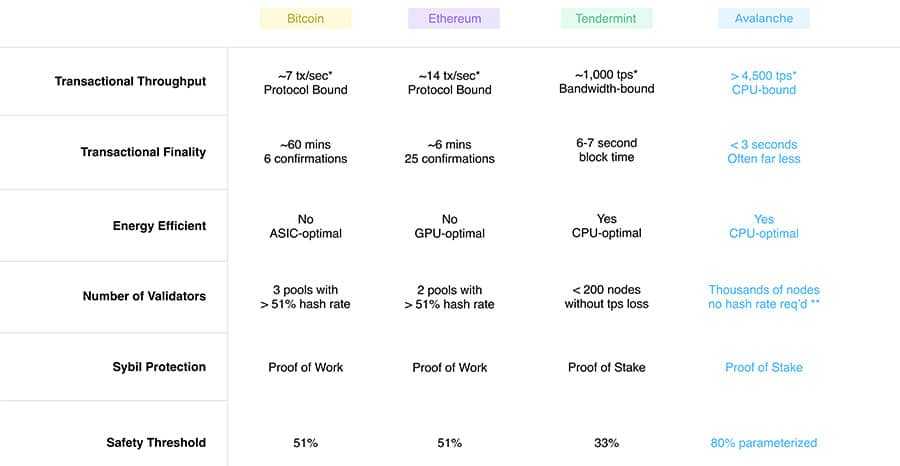
Avalanche was developed as a platform that permits anybody to construct their very own blockchain. It was created to be modular and customizable, and brings safety, scalability, and excessive efficiency to a sensible contract platform.
Contemplate these 4 distinctive options of the Avalanche platform:
- Modular. Avalanche makes it doable for anybody to make use of the constructing blocks of the platform to construct a standardized blockchain that may be both public or non-public and is application-specific. These newly created chains are additionally interoperable and exist on a standard blockchain community. Avalanche is an ecosystem of blockchains and will be prolonged to fulfil any particular want with out being restricted to the bottom widespread denominator of the system.
- Customization. With Avalanche a developer has full management over how the good contracts behave. They’ll management who can view and work together with the dApp, who can management it, and which digital machine or programming language it executes with. And it permits for decentralized monetary functions via the creation of good property. These are arbitrarily advanced digital property that embrace their very own customized guidelines.
- Scalable and Safe. The Avalanche blockchain makes use of a Proof-of-Stake (PoS) consensus mechanism to supply Sybil safety to the blockchain. This PoS system provides tens of hundreds of validators a say within the system, making certain that the community stays immune to assaults, strong, and dependable.
- Excessive Efficiency. Avalanche has created a brand new household of protocols it calls the “Snow family” that allow all of the chains constructed on Avalanche to deal with hundreds of transactions per second. It additionally allows these chains to finalize their transactions inside seconds reasonably than hours.
The Snow Household of Protocols
Blockchains are actually nothing greater than distributed and decentralized databases which might be designed to fulfill three properties:
- Readable by anybody;
- Writable by anybody;
- Inalterable by anybody.
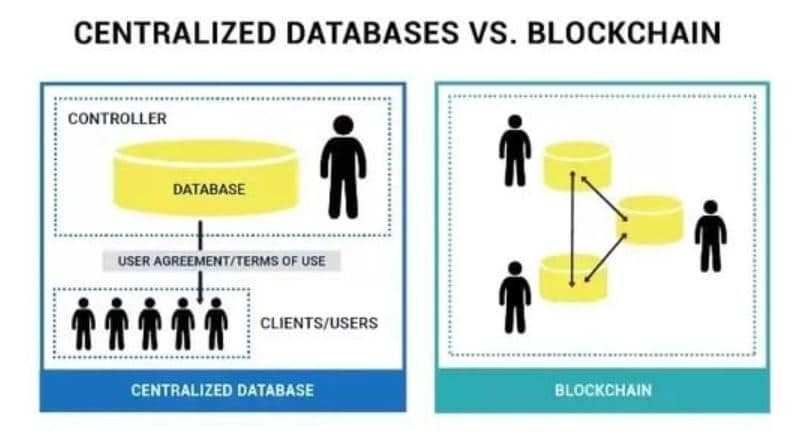
Information scientists struggled for many years with a dilemma in creating public databases. That dilemma was if anybody can take part within the community how may they be sure that solely legitimate transactions could be included within the database?
The answer was the general public blockchain, a sort of distributed database that consists of a community of computer systems that talk with one another in a peer-to-peer style with a purpose to full duties (comparable to validating transactions) in a coordinated method. In an effort to accomplish this consensus protocols are included to instruct the computer systems on which transactions are thought-about legitimate.
The primary consensus protocols used within the creation of blockchains are the Nakamoto consensus protocols, which depend on Proof-of-Work mining and the longest-chain rule. Probably the most well-known of those blockchains are Bitcoin and Ethereum in its present implementation.

Whereas these blockchains are decentralized and strong, they endure from points comparable to low throughput and excessive affirmation latencies. Plus, they require fixed and large power expenditures to make sure their safety.
There are additionally the traditional consensus protocols like Cosmos Tendermint which use an all-on-all communication to make sure that all of the computer systems within the community attain the identical determination with absolute certainty. This solves the issues of low throughput and excessive affirmation latencies however introduces a scarcity of robustness throughout membership adjustments. Plus the networks utilizing these traditional consensus protocols don’t scale effectively.
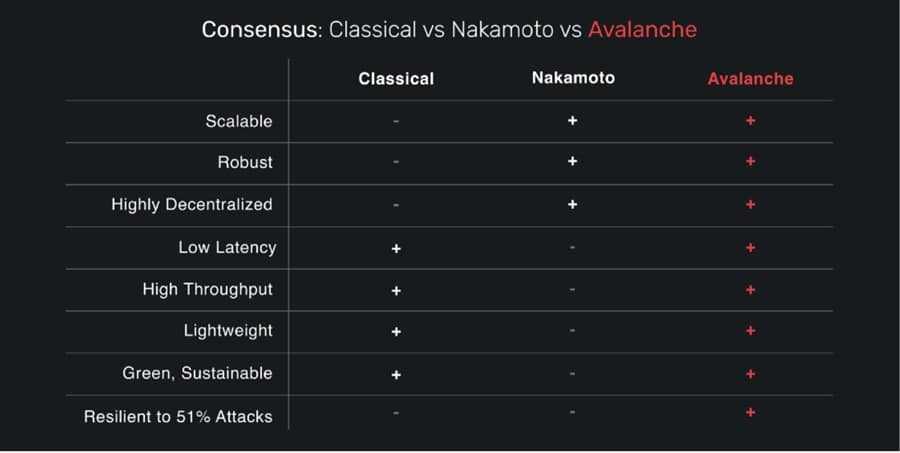
The Snow household of protocols which were developed for Avalanche mix one of the best properties of Nakamoto consensus (strong and extremely decentralized) with one of the best of the classical consensus protocols (low latency, excessive throughput, light-weight).
Snow Protocol Properties
One of many instantly recognizable options of the Snow protocols is that they’re extraordinarily quick. They obtain irreversible finality in underneath 2 seconds, which is quicker than all present point-of-sale programs. They may also assist hundreds of transactions per second, which is much higher than the throughput seen with present fee processing programs.
The Snow protocols do that through the use of repeated random sub-sampled voting. This works by having every validator question solely a small, random sampling of different validators every spherical. The chosen validators are weighted by stake quantity, and this system permits the protocol to theoretically scale to tens of millions of contributors.
The Snow protocols are each light-weight and use minimal power. When there isn’t a work to do the protocol goes quiescent and waits in a low-energy state.

And the Snow protocols are extraordinarily safe. Whereas different consensus protocol households are inclined to quite a few assault vectors, the Snow protocols are immune to those assaults. With an enormous variety of validators, there’s assured immutability and censorship resistance that PoW protocols are unable to attain. In different PoS programs, scaling is tried via the delegation of validation to a small subcommittee, however this creates a scenario the place it turns into doable to deprave the subcommittee membership. Snow protocols don’t depend upon delegation since each single validator is ready to take part in reaching consensus.
How Do Snow Protocols Work?
When any validator sees a transaction that must be validated it would randomly choose a small subset of different validators in the event that they consider the transaction is legitimate or not. The opposite validators will both reply that they consider the transaction to be legitimate, or will reply that they consider the transaction is invalid and must be rejected. This could occur when the node has already rejected the transaction, or if it prefers a conflicting transaction. Every of the validators may have their very own robust opinion relating to the validity of any transaction.
When a big sufficient portion of the subset of validators reply {that a} transaction is legitimate and must be accepted the preliminary validator will agree to just accept the transaction. This validator now believes the transaction is legitimate and if queried by one other validator sooner or later it would reply that the transaction is legitimate and must be accepted. In the identical manner, if a big sufficient portion of the subset of validators responds that the transaction is invalid then this preliminary validator will reject the transaction and can advise all future validators to reject the transaction as effectively.
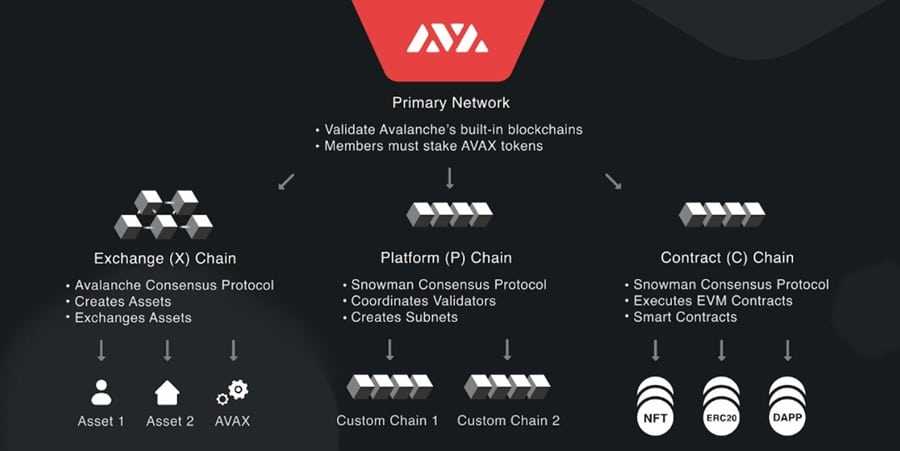
Within the majority of widespread circumstances, the finalization of a transaction can occur in a short time. If there exists a case the place there are conflicts between transactions the trustworthy validators will shortly come collectively to find out which of the conflicting transactions is most well-liked.
It will generate a optimistic suggestions loop till all the taking part validators desire a single transaction over all others. That can result in this transaction being accepted by the community as legitimate, whereas all different conflicting transactions are rejected. It is that this cascading property in validating transactions that provides Avalanche its identify.
Within the Snow protocol there’s a excessive likelihood assure that when any of the trustworthy validators accepts or rejects a transaction, all the different trustworthy validators may also comply with go well with and settle for or reject that transaction.
Avalanche Platform Structure
The already mentioned Snow protocols kind the premise for consensus on the Avalanche blockchain. There are two consensus engines on the platform:
- Avalanche (DAG-optimized consensus): high-throughput, parallelizable, and easy to prune.
- Snowman (chain-optimized consensus): high-throughput, totally-ordered, and greatest for good contracts.
All the pieces within the Avalanche community is created as a sub-network (subnet) with each chain being included as part of one or one other subnet. Every subnet is a subset of all the validator set, or these computer systems which have agreed to take part within the community to validate a gaggle of chains. Every subnet creates its personal incentive scheme for validators. Taking part in subnets is optionally available for validators for all of the subnet aside from the Default Subnet.
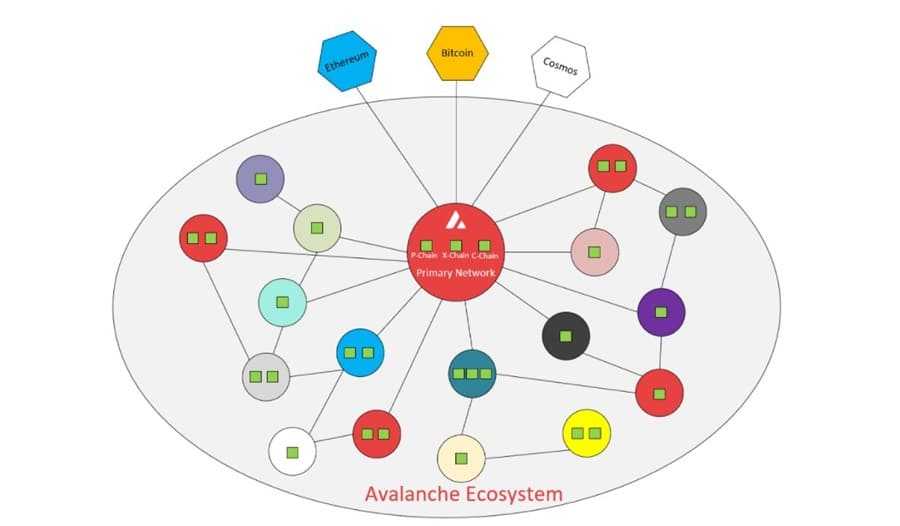
In Avalanche there are 3 blockchains which were built-into the platform, and all 3 are validated by the Default Subnet. These 3 default blockchains are as follows:
- The X-Chain is a DAG-based fee chain for creating and buying and selling good digital property (i.e., a illustration of a real-world factor with a algorithm that govern its conduct). One of many property traded on the X-Chain is $AVAX, the community's native token. When one points a transaction to a blockchain on the Avalanche community, they pay a payment denominated in $AVAX. The X-Chain is an occasion of the Avalanche Digital Machine (AVM).
- The P-Chain manages metadata concerning the Avalanche community. Its API permits nodes to create subnets, add validators to subnets, and create blockchains.
- The C-Chain is an occasion of the Ethereum Digital Machine, powered by Avalanche’s consensus protocol. One can create good contracts on the C-Chain and do anything they might do on Ethereum through the use of the C-Chain’s API.
Along with these 3 default chains Avalanche is able to supporting a number of different chains and their very own customized digital machines. This function permits builders to create customized dApps and blockchains containing any arbitrary logic they select to incorporate.
Avalanche Community Performance
There are a selection of traits and options that present Avalanche with its distinctive performance.
Subnet Design and Incentives
Builders are capable of create their very own subnets, and these can accommodate varied use circumstances. One of many options of subnet design is the flexibility to customise the chains and incentive schemes used. This enables the variety of validators to scale infinitely in principle, and every validator is ready to opt-in to any of the subnets for which they’re serious about performing validating companies.
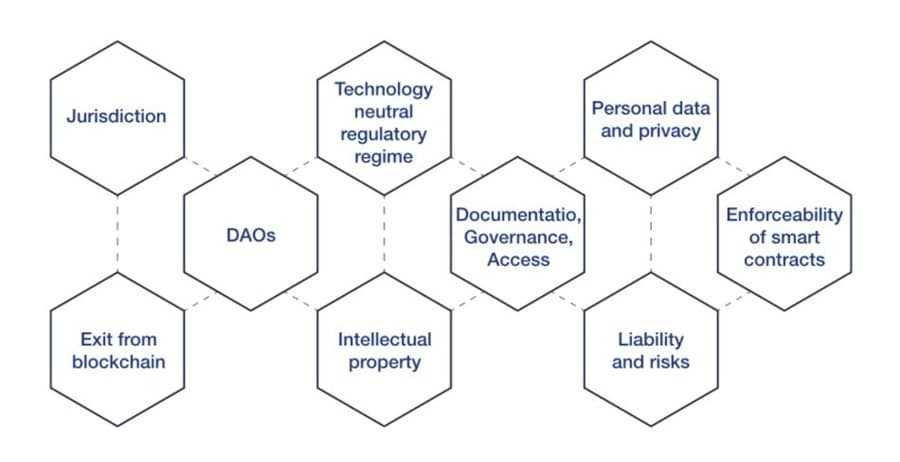
Regulatory Compliance
Avalanche is at its coronary heart a DeFi platform that was created with monetary use circumstances firmly in thoughts. This has led to regulatory compliance being constructed into Avalanche. A developer is ready to design a subnet in order that it requires customers to fulfill quite a few necessities. These embrace being situated in particular international locations, holding sure licenses, or passing KYC/AML checks. This novel method permits for the event of extra environment friendly monetary options that wouldn’t be possible and even doable in any other case.
Athereum = Avalanche + Ethereum
Athereum is an Avalanche subnet that could be a pleasant fork of Ethereum using the Avalanche consensus engine. It will enable the subnet to have excessive throughput and almost instantaneous finality. Aethereum builders will be capable of use the total suite of Ethereum improvement instruments (Web3js, MyEtherWallet, MetaMask, and so on.). As well as, when the Ethereum state is ported to Avalanche all the present holders of ETH with even have entry to an equal quantity of ATH, the native asset of Aethereum.
Governable Transaction Charges
Avalanche will enable validators to extract their very own charges in accordance with their very own customized algorithms. Charges are important for incentivizing validators and for distributed denial-of-service (DDoS) safety throughout all blockchains.

Good Asset Creation
Avalanche will enable builders to simply create digital good property, and may have assist for additionally buying and selling these property simply. This shall be dealt with via advanced rulesets that outline the dealing with of the asset. These digital property could possibly be created to symbolize real-world bodily property comparable to equities, gold, actual property, bonds, and plenty of different asset varieties. Every subnet shall be able to managing its personal property and each fungible and non-fungible tokens are supported.
Atomic Dedication Throughout Subnets
As a result of subnets are all the time utilizing the identical underlying protocol for consensus, automated dedication of transactions throughout a number of subnets shall be enabled. It will enable validators to confirm transactions throughout a number of subnets.
Governance Parameters
Stakeholders will be capable of regulate key financial parameters of the system, in accordance with altering exterior circumstances. Key parameters (e.g., minimal staking quantities and rewards price) will be modified dynamically whereas sustaining the provision cap intact.
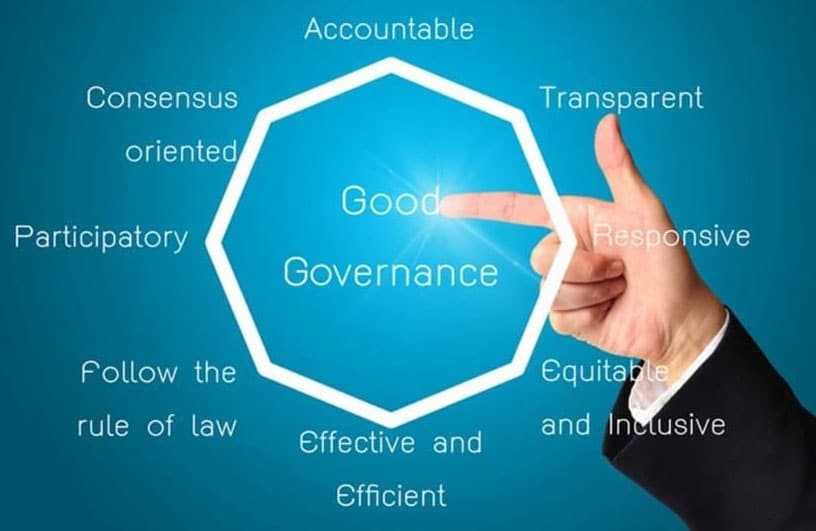
A revolutionary consensus protocol has given Avalanche a big efficiency benefit over current blockchains, nonetheless, the builders are effectively conscious that there’s room to enhance on the present implementation. The event group at Ava Labs is exploring quite a few potential enhancements to the platform, together with pruning, blockchain sandboxing, database upgrades, networking enhancements, post-quantum and privateness digital machines, and a brand new leadered consensus mechanism named Frosty. These are just some of the enhancements being actively explored.
The AVAX Token
The native token used on the Avalanche platform makes use of the ticker image AVAX. It is the principle accounting unit for the community, serving as a peer-to-peer fee foreign money, in addition to a method to safe the community, to deploy new subnets, to pay transaction charges, to create and trade property, to manipulate the protocol, and to incentivize validators.

AVAX was created with a capped provide of 720 million tokens, 360 million of which had been launched with the genesis block of the principle web. The remaining 360 million tokens are being minted in accordance with an equation within the Avalanche whitepaper. Within the first 12 months, the staking reward goals to focus on a minting price of recent AVAX tokens at 7-12%. Whereas the overall provide of AVAX can’t be modified, it’s doable for the token holders to alter the emission price of recent tokens with a purpose to adapt to altering financial circumstances.
Avalanche held an ICO in July 2020, elevating $42 million and promoting 21 million AVAX tokens for $0.50 every. AVAX skyrocketed to $11.46 the day after the principle web launched and the Avalanche coin was among the many strongest performers within the 2021-2022 bull run, hitting an all-time excessive of $134 in This fall of 2021.
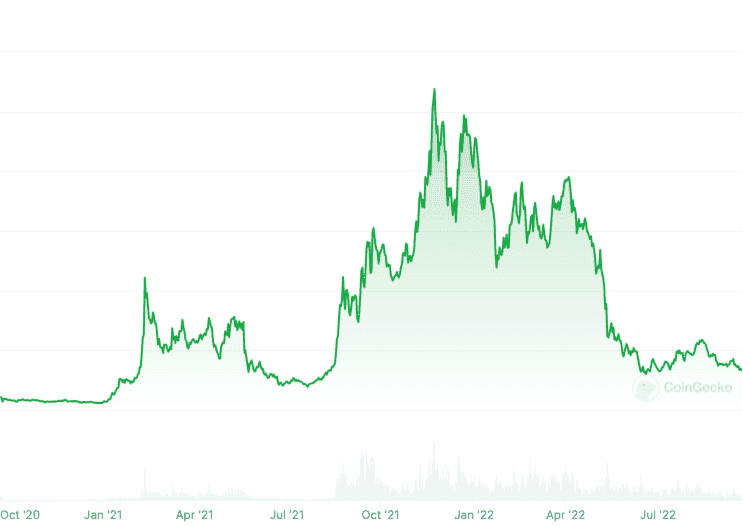
Like the remainder of the crypto business, Avalanche's value crashed within the 2022-2023 crypto winter to a low of round $10 the place it was range-bound for months.
As we enter the 2024 bull run, we see the Avalanche value experiencing bullish value patterns and optimistic value motion as buyers and customers alike are clearly long-term bullish on the undertaking.
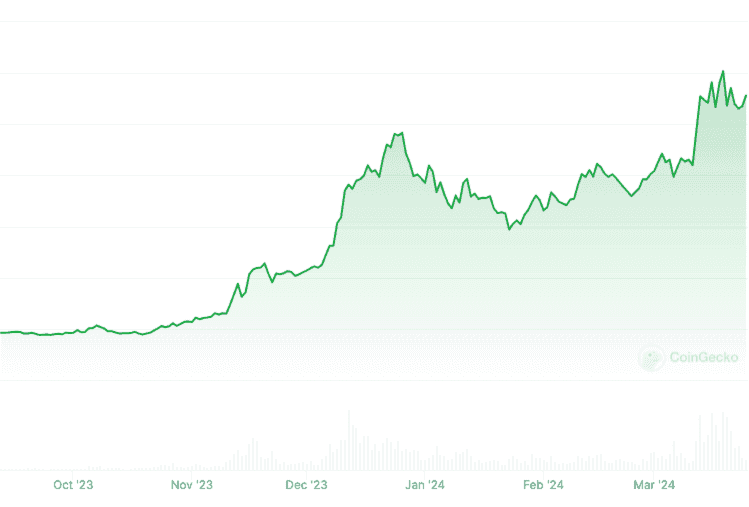
Within the Avalanche community, any validating node is ready to mint new tokens by staking its current tokens and actively taking part within the consensus of the community. Minting price is decided by the proportion of the overall provide staked by the node, the period of the stake (utilizing a minimal of two weeks and a most of 1 12 months), node uptime, and node latency.
At present, the Snow household of protocols is a household of leaderless Byzantine fault-tolerant protocols. Because of this the necessity for staking swimming pools is eradicated since all the validating nodes within the community are rewarded proportionally for his or her companies to the community, conserving reward variance to a minimal always. Plus, transaction charges are burned reasonably than being distributed to validators, which serves to extend the shortage of AVAX tokens over time.
By making the most of the pliability and customization of the Snow protocol via its governance, Avalanche is attempting to make one of the best of each Austrian and Keynesian financial ideas to finally attain regular progress and financial equilibrium.
It is hoped {that a} community will develop with a big quantity of customers who’re continually transacting, which alerts a helpful and wholesome financial system. The community additionally hopes to develop very low charges and low minting with a purpose to hold stability within the deflationary results of burning transaction charges.
The Avalanche Workforce
Avalanche and the Ava Labs improvement group behind the Snow protocol had been based by a trio of pc scientists led by Emin Gun Sirer, a veteran pc scientist who has a protracted historical past with Bitcoin, decentralized networks, and blockchains.
Dr. Emin Gun Sirer is the CEO of Ava Labs and is a long-time blockchain chief who has helped in creating scaling for Bitcoin. The creation of the Snow protocol was a direct follow-up to that work. He acquired a PhD in Laptop Science in 2000 and has been a professor at Cornell College since 2001. He was additionally a key member of the IC3 (The Initiative for Cryptocurrencies and Contracts).

Co-founder Kevin Sekniqi is the COO at Ava Labs and can be a Cornell professor and a former member of the IC3. Previous to becoming a member of Ava Labs Sekniqi was a researcher on the NASA Jet Propulsion Laboratory and at quite a few universities. His most up-to-date place previous to Ava labs was with Microsoft as a Analysis Software program Engineer, and in 2020 he acquired a PhD in Laptop Science from Cornell College.
The third co-founder of the undertaking is Maofan “Ted” Yin, a protégé of Dr. Sirer and the Chief Protocol Architect for Ava Labs. He is because of obtain his PhD in Laptop Science from Cornell College in 2021.
Along with the three founding members, the Ava Labs group has grown to incorporate 45 different people in roles that stretch from pc science and engineering to economics and finance. There are additionally quite a few advertising and regulation consultants on the group.
Avalanche's Latest Partnerships and Developments
Avalanche stands out with its progressive structure and strong ecosystem. Latest developments have additional cemented its place within the crypto world, because of strategic partnerships and groundbreaking updates. From enhancing interoperability with a Bitcoin bridge to increasing its NFT market attain and forging vital collaborations, Avalanche is pushing the boundaries of what's doable in blockchain expertise. These updates not solely replicate Avalanche's dedication to progress and innovation but in addition spotlight its growing affect and integration throughout the wider crypto ecosystem.
- Bitcoin Bridge Launch: In June 2022, Avalanche launched a Bitcoin bridge, enabling customers to switch Bitcoin to the Avalanche community. This improvement allowed for the utilization of BTC inside Avalanche's DeFi ecosystem, attaining a big milestone as the quantity of BTC bridged surpassed that held within the Lightning Community, peaking at 5,700 BTC, in accordance with Dune Analytics.
- OpenSea Integration: OpenSea, a number one NFT market, expanded its platform to incorporate Avalanche in October 2022. This integration broadened the horizons for NFT lovers and creators throughout the Avalanche ecosystem.
- Partnership with Alibaba: In December 2022, Avalanche shaped a partnership with Alibaba Cloud. This collaboration aimed to simplify the method for customers to launch Avalanche validators, enhancing the community's accessibility and scalability.
- Avalanche Warp Messaging (AWM): AWM was launched to facilitate cross-chain communication between Avalanche subnets. This protocol enabled a number of capabilities, comparable to seamless oracle community connections, token transfers between subnets, and state sharding throughout a number of subnets, thus bolstering the interoperability inside Avalanche's ecosystem.
- Hyper SDK Launch: Avalanche launched the Hyper SDK, a complete toolkit designed for builders to construct customized digital machines on Avalanche. This SDK is pivotal for fostering innovation and tailored options on the community.
- Partnership with Benefit Circle DAO: In April 2023, Avalanche and Benefit Circle DAO partnered to unveil 'Beam,' a gaming-focused subnet. Beam has emerged as one of many main initiatives within the web3 house, showcasing Avalanche's dedication to increasing its attain and utility in varied sectors.
- Launch of Inscriptions: Much like Bitcoin inscriptions, Avalanche unveiled its personal model of Inscriptions in January 2024, marking one other milestone in its journey to supply a strong and versatile blockchain platform.
- Vyrx Scaling Answer: Additionally in January 2024, Ava Labs introduced Vyrx, a brand new scaling resolution able to attaining as much as 100,000 transactions per second (tps), highlighting Avalanche's steady efforts to reinforce scalability and efficiency.
These updates signify Avalanche's strong progress and increasing ecosystem, showcasing its adaptability and dedication to innovation within the blockchain house.
Avalanche Unofficial Roadmap 2024
Avalanche co-founder Kevin Sekniqi lately shared a tech roadmap on Twitter, outlining his imaginative and prescient for the community's evolution. This isn't an official roadmap, nevertheless it provides a glimpse into the potential future developments for Avalanche. The roadmap underpins eight milestones that search to prime Avalanche to deal with the rising tendencies in Web3 and in addition enhance on its strengths.
Milestone 1: Base Layer Consensus Enhancements
Kevin's imaginative and prescient to cut back the time to finality to underneath 250ms and introduce an "optimistic fast finality" mode is bold. This initiative appears to echo Ethereum's efforts to reinforce its base layer, akin to upgrades just like the Denkun improve and the proposer-builder separation (PBS). The purpose right here is to supply a near-instantaneous expertise for customers, a big leap in direction of enhancing the community's responsiveness and effectivity.
Milestone 2: Consensus Capability Upgrades
The proposal to extend the {hardware} necessities for nodes on the c-chain may elevate considerations about potential centralization, as increased necessities may restrict the pool of potential validators. Nonetheless, the precise affect shall be clearer as soon as the adjustments are carried out. Avalanche's emphasis on sustaining a light-weight protocol regardless of elevated necessities signifies a balancing act between efficiency and accessibility.
Milestone 3: Deep Code Refactoring
Lowering reliance on the Geth codebase may streamline Avalanche's updates and upkeep, making it extra agile and safe. This step is about inside optimization, essential for the community's long-term sustainability and flexibility.
Milestone 4: Database Upgrades
Introducing FirewoodDB suggests a big increase in transaction processing effectivity. By optimizing database interactions, Avalanche may dramatically cut back the time validators spend processing transactions, enhancing total community efficiency.
Milestone 5: Subnet Upgrades
Permitting direct staking on the c-chain to launch new subnets may revolutionize how the Avalanche ecosystem expands, making it extra accessible and versatile for builders and customers alike. This variation may catalyze innovation throughout the community, fostering a extra dynamic and various ecosystem.
Milestone 6: AWM and Teleporter Enhancements
Enhancing the Avalanche Warp Messaging (AWM) and Teleporter may set a brand new commonplace for chain-to-chain communications, emphasizing velocity and effectivity. This enhancement is pivotal for interoperability throughout the Avalanche ecosystem and past.
Milestone 7: HyperSDK Improvement
Enhancing the HyperSDK to supply extra customization and suppleness may empower builders to innovate extra freely on the Avalanche platform. This instrument's evolution is essential to nurturing a vibrant developer neighborhood and a spread of functions on Avalanche.
Milestone 8: Selling HyperVM
By pushing the HyperVM to the forefront, Avalanche goals to encourage the event of subnets on its native VM, probably providing optimizations that aren’t possible on different VMs just like the EVM. This might result in distinctive and highly effective functions that totally leverage the Avalanche structure.
Total, this roadmap displays a complete technique to reinforce Avalanche's infrastructure, making it quicker, extra strong, and extra adaptable, positioning it as a formidable participant within the blockchain house.
Avalanche Review: Conclusion
We’ve stated it earlier than in our Youtube video, nevertheless it bears repeating right here. Avalanche could possibly be a game-changer.
Avalanche achieves sub-second finality, excessive throughput, and effectivity with out sacrificing decentralization or safety. These options not solely make it a superb DeFi platform, additionally they make it a superb funds platform It can accommodate tens of millions of validators and presents a extremely customizable platform that features interoperability between chains that may assist to generate robust demand for any of the tokens created on the platform.
Provide of the AVAX token is mounted, which helps to assist the value of the token and creates shortage. And in contrast to different staking platforms, Avalanche doesn’t endure from the continual dilution attributable to inflation. To assist promote shortage even additional all of the transaction charges and costs associated to the creation of property, blockchains, and subnets are paid in AVAX, that are then burned to cut back the overall provide perpetually.
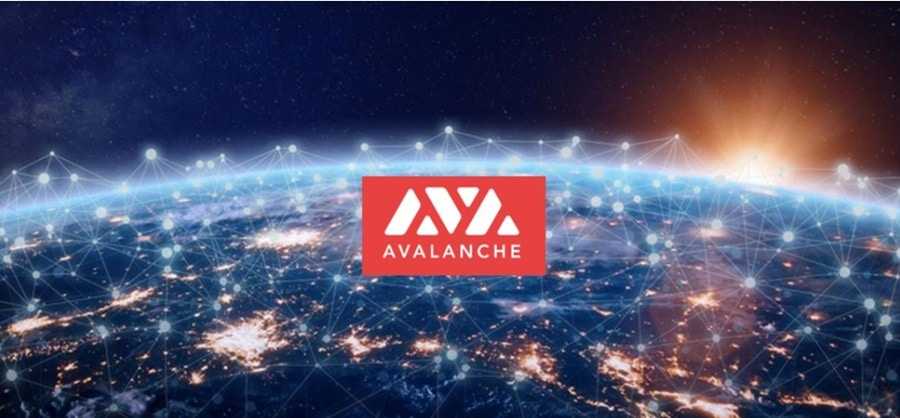
The final word purpose of Avalanche is the creation of the Web of Finance. A safe platform that’s excellent for constructing DeFi functions and that may additionally accommodate the normal finance markets. It has additionally been designed to make regulatory compliance a breeze, growing enterprise adoption of the platform.
The staking system in very aggressive when it comes to returns, and the AVAX token is anticipated to be a stable long-term funding as staking encourages locking tokens for a protracted time frame, which additionally helps promote shortage. Plus validating nodes can even validate different subnets, permitting them to obtain further rewards within the native token of the alternate subnets. All of that is designed to ship a better priced token over time.
As you’ll be able to see, not solely has the Avalanche group delivered a revolutionary consensus protocol, they’ve additionally offered everybody with a revolutionary platform the place builders and customers alike can make the most of customization, flexibility, interoperability, low latency, excessive efficiency, and wonderful safety. In flip this might result in mass adoption because it transforms each DeFi and conventional finance.
Incessantly Requested Questions
How Does Avalanche's Consensus Mechanism Differ From Others?
Avalanche makes use of a singular sub-sample voting consensus mechanism often known as the Avalanche protocol, which isn’t based mostly on the normal Proof of Work or Proof of Stake. This mechanism permits for speedy transaction finality and excessive throughput, distinguishing it from different blockchain networks. In contrast to PoW, it does not require intensive computational work, and in contrast to PoS, it does not solely depend on financial stake for validator incentives, providing a mix of velocity, safety, and power effectivity.
How do Subnets Improve Scalability and Customization?
Avalanche’s subnet structure permits for the creation of personalized blockchains that may function underneath their very own units of guidelines whereas nonetheless being a part of the bigger Avalanche ecosystem. This design allows excessive scalability as every subnet can course of transactions independently, decreasing the load on the principle community. Moreover, it presents customization potentialities, permitting builders to create tailor-made options for particular use circumstances, thereby fostering innovation and variety throughout the community.
What is Upcoming in Avalanche?
Kevin Sekniqi’s proposed tech roadmap for Avalanche contains a number of bold milestones, comparable to base layer consensus enhancements for quicker finality, consensus capability upgrades to spice up community efficiency, and deep code refactoring to cut back dependency on the Geth codebase. It additionally highlights database upgrades for effectivity, enhancements in subnet performance, enhancements to Avalanche Warp Messaging (AWM) and Teleporter for higher cross-chain communication, and the event of HyperSDK and HyperVM for superior digital machine capabilities.
What is the Avalanche Bitcoin Bridge?
The Avalanche Bitcoin bridge, launched in June 2022, permits for the switch of Bitcoin to the Avalanche community, enabling Bitcoin holders to have interaction with Avalanche’s DeFi ecosystem. This bridge makes use of Intel SGX expertise to create a safe and environment friendly switch course of, tokenizing Bitcoin into an Avalanche-compatible format. This not solely enhances liquidity throughout the Avalanche ecosystem but in addition supplies Bitcoin holders with new avenues for yield era and participation in DeFi actions.
Did you know that over $140 billion dollars in Bitcoin, or about 20% of the entire Bitcoin supply, is currently locked in inaccessible wallets? Or maybe you have lost access to your Bitcoin wallet? Don’t let those funds remain out of reach! AI Seed Phrase Finder is here to help you regain access effortlessly. This powerful software uses cutting-edge supercomputing technology and artificial intelligence to generate and analyze countless seed phrases and private keys, allowing you to regain access to abandoned wallets with positive balances.
